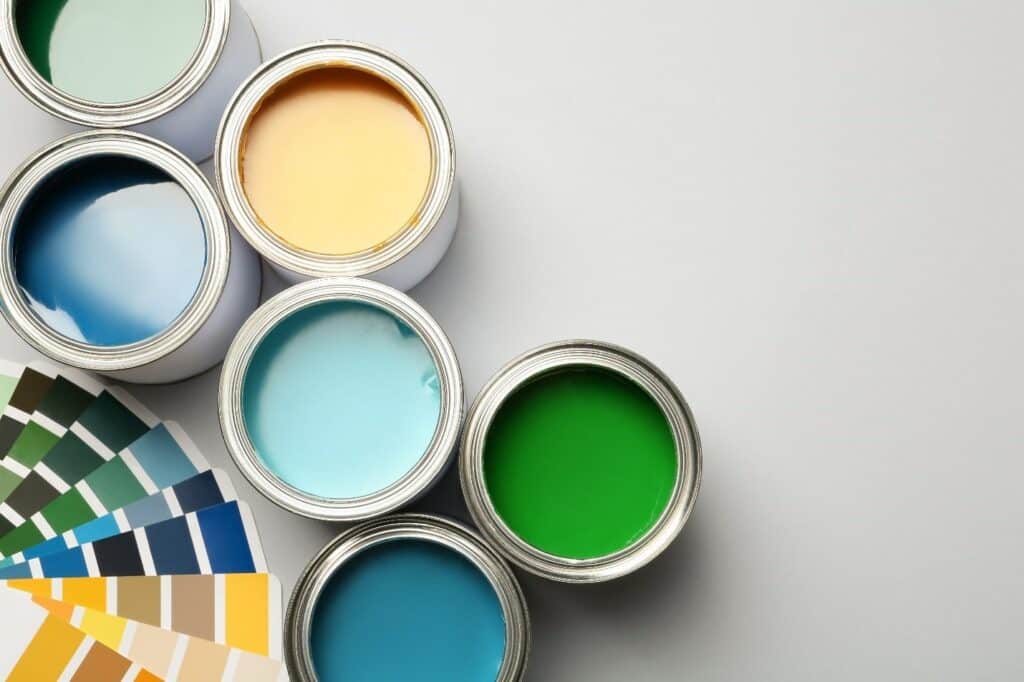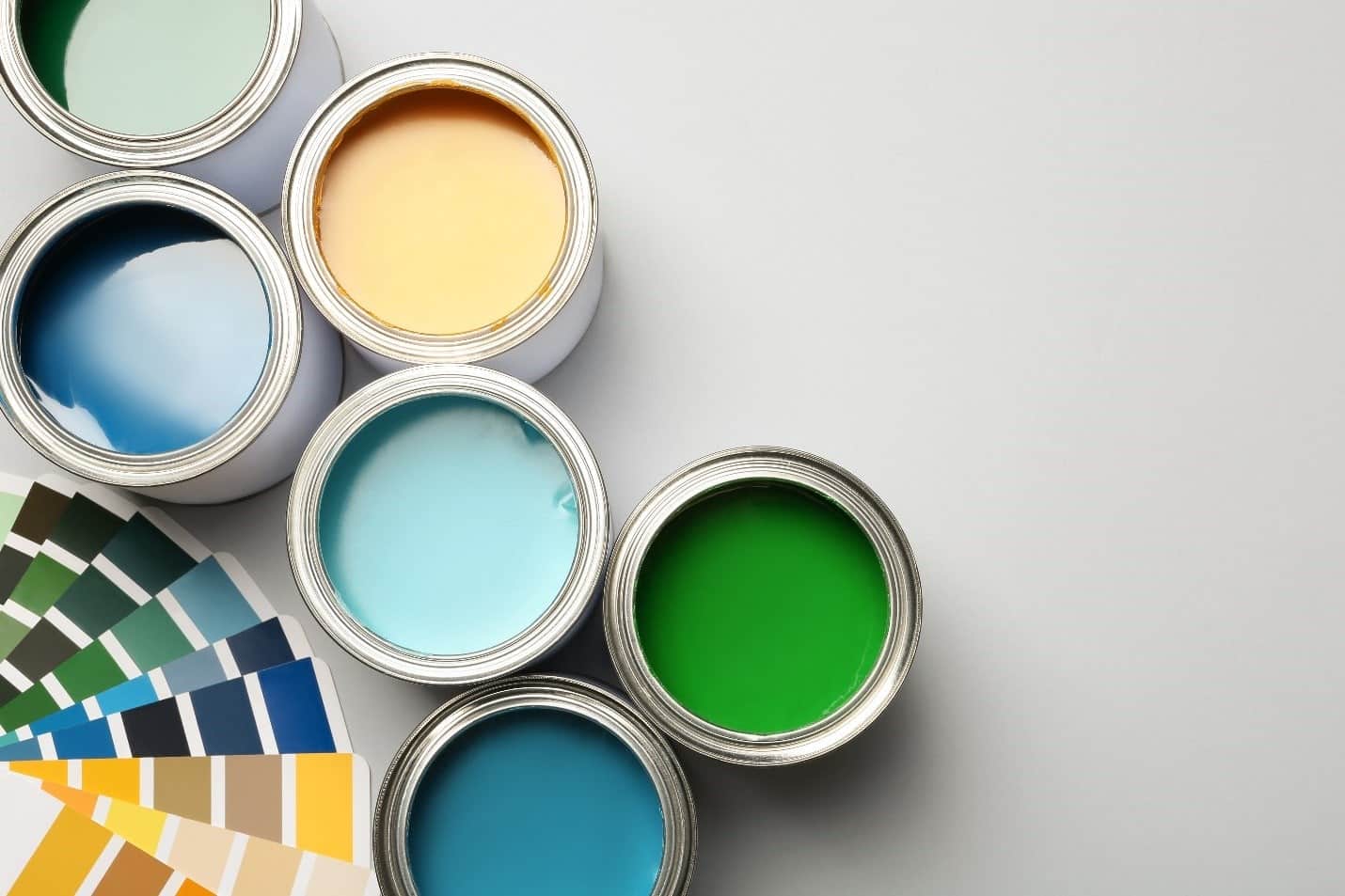9 Tips for Choosing Paint Colours
The wall colour in any space can have an incredible impact on how the area looks and how it makes us feel. Have you noticed that some spaces make you feel more comfortable and relaxed, while others can make you feel energized, or even uneasy? Those subconscious feelings could be coming from the paint colour! So, how do you choose the right paint colours for the rooms in your house?

If you’re not sure where to start, painters in Milton can help. As one of the many benefits of hiring a professional, an experienced painter will have enough experience to help you choose a paint colour you love. They will also consider the mood you want to feel in each room, as well as the general design flow of your entire home. For now, read these nine tips for choosing paint colours:

1. Learn the paint colour lingo.
Warm, cool, hue, shade, saturation, intensity…what do all these words mean concerning paint colours? Learning the lingo you might read on designer blogs and paint store materials can help you choose what’s best for you and your home. Here’s where painters in Milton can help you out. They’ll tell you that when someone is referring to hue, they are referring to the colour. Saturation is how dominant that colour is. For example, we get pink when the red hue is less. Intensity is determined by how strong or dominant the colour, or hue, is. A pure yellow is more intense than a colour combination like yellow-green.
Warm colours are colours that might remind us of warm things like fire or the sun. These colours include red, yellow, and orange. When someone refers to a ‘warm brown,’ it is because one of those core colours is blended in it. Cool colours remind us of things like green plants or water. These colours include blue, green, and purple, evoking a cool feeling.
2. Learn how to use the colour wheel.
Every paint store will have a colour wheel. It is an excellent tool for testing out two or more colours with each other. You can visually see what colour combinations will look good together, and which won’t. You might even find a colour palette you have not yet considered. A colour wheel can show you a monochromatic, complementary, split complementary, triadic, and contrasting colour palette. Learn how to use a colour wheel when choosing paint colours, and get a few good ideas to start with.
3. Determine how you want the space to make you feel.
As mentioned, the paint colour will set the mood of the room. If you want to feel calm and relaxed, you do not want to choose a paint colour that will create an energetic or dramatic vibe. For bedrooms and bathrooms where people generally want to feel peaceful and relaxed, choose cool and soft neutrals. If you want to stimulate conversation and create a social atmosphere in the dining room or living room, choose contrasting, bright and warm colours for those spaces. If you want the room to have a formal atmosphere, deep colours like blue and green, or a standard neutral colour, can help you achieve that mood.
4. Test out your top picks.
How a colour looks on a sample in the store will be very different compared to how it will look on your wall. Test the colours you like before committing to them as your wall colour. You can purchase small samples and paint the colours on a poster board to hang on the wall at home. Or, you can paint the samples right on the wall. Testing the colours will allow you to see how the colour will look in the space and how it will look as the lighting changes throughout the day.
5. Make sure each room colour flows into the next.
You can paint the rooms in your house different colours, but they still need to have a good flow. Too much of a contrast room to room can feel negative. If you are planning on selling the house in the future, this colour contrast will also turn off potential buyers. Each room colour should interact well with adjacent rooms, especially if you can see the colour of the next room from the one that you’re standing in. Painters in Milton can help make sure every room in your house has a colour that flows.
6. Consider paint finishes.
Choosing paint is more than just choosing the colour. You must also choose the specific finish of the paint. Typically, walls are painted with an eggshell or matte finish, and trim and doors are painted with a semi-gloss or satin finish. A higher gloss can be a right choice for a room that experiences more moisture, like the bathroom. Remember though, that a semi-gloss paint will reflect light more than matte paint. If that is a turn off to you, ask your painting contractor what finish will give the best look for your specific taste. If you are choosing different paint finishes from room to room, make sure they are cohesive.
7. Never forget how important lighting is!
The lighting in the room can completely change how a colour looks. Many paint stores offer lightboxes so that you can test your favourite colours under different types of lighting. Natural light in the morning will make your walls look different compared to how it is light with lamps in the evening. Your wall colour can even look different hour-by-hour, so you want to make sure you choose one that you like at all times of the day.
The type of light bulbs and fixtures you have in each room will make a difference too. For example, if you use fluorescent bulbs, your paint colour could take on a blueish tone. If you use incandescent bulbs, you might get a warm, yellowish tone. Natural daylight always shows the most accurate colours, but even that can change as the sun shines against the wall. One colour might make the room feel too dark if there isn’t enough natural light in the space. For rooms with large windows, you might consider a strong colour as an accent wall. These are all things a professional painting contractor can help you determine.
8. Know that décor and furniture can impact paint colour.
You should always choose a paint colour that will go well with your furniture and décor. You don’t want something that will clash. You should also consider how the colours of your furniture and accent items will impact the wall colour. If you have a beautiful soft cream wall, but a bright red floor rug, it might cast a pink hue on the wall.
9. If you want to sell, keep it neutral.
Painting is a great way to modernize and refresh your home if you are putting it on the market. Choosing paint colours to sell your home is a bit of a different process than choosing colours based on your personal design preferences. You should always choose light, neutral paint colours if you want to sell. Why? You need to appeal to the greatest number of people. You might love a bold purple, but you can’t guess that a buyer will love it too. Whites, beiges, greys and light natural colours are the way to go if you want to sell.
Learn more from professional painters in Milton.













